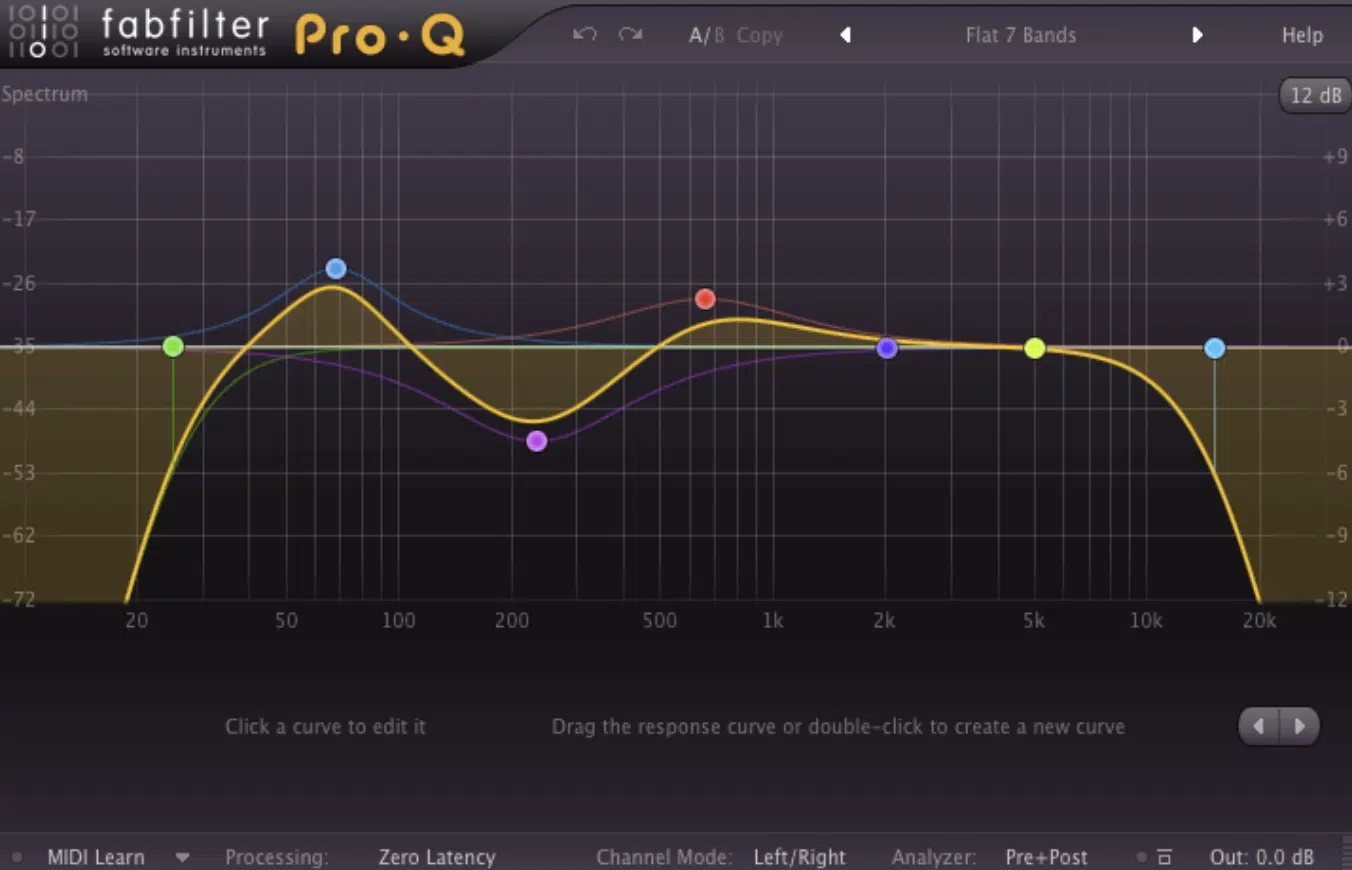Best EQ Settings For Bass: Unlock The Punch And Depth In Your Sound
When it comes to bass, getting the right EQ settings can make or break your sound. Whether you're a musician, a DJ, or just someone who loves to tweak their audio setup, finding the best EQ settings for bass is crucial. Imagine this: you've got a killer track ready to drop, but the bass just doesn't hit the way you want it to. That's where EQ comes in, my friend, and it's time to learn how to tame that low end like a pro.
EQ might sound intimidating at first, but trust me, it’s not rocket science. It’s all about understanding what frequencies work best for your bass and how to balance them with the rest of your mix. In this article, we’re going deep into the world of bass EQ settings. We’ll cover everything from the basics to advanced techniques that’ll have your sound booming in no time.
Let’s face it, everyone loves a good bassline. It’s the heartbeat of any track, the thing that makes people move and groove. But without the right EQ settings, your bass can easily get lost in the mix or, worse, muddy up your sound. Stick around, and we’ll break it down step by step so you can get that perfect bass tone you’ve been chasing.
- Guten Morgen Mein Schatz Romantische Bilder Sprche
- Meralgia Paraesthetica Die Besten Bungen Behandlung
Understanding the Basics of Bass EQ
Before we dive into the best EQ settings for bass, let’s talk about what EQ actually is and why it matters. EQ, or equalization, is the process of adjusting the balance between different frequency components in an audio signal. Think of it like a volume knob, but instead of controlling the overall volume, you’re adjusting specific frequencies.
For bass, the key frequencies usually fall between 20Hz and 250Hz. This range is where the magic happens, giving your bass its punch, depth, and clarity. But it’s not just about boosting these frequencies; it’s about finding the right balance to ensure your bass sits well in the mix without overpowering other elements.
Here are some quick tips to keep in mind when working with bass EQ:
- Jellycat In Berlin Finden Die Besten Shops Onlinealternativen
- Kreuzwortrtselhilfe Leere Mit 6 Buchstaben Die Besten Lsungen
- Start with a flat EQ and gradually adjust as needed.
- Use a high-pass filter to remove unwanted low frequencies.
- Be cautious with boosting; sometimes cutting certain frequencies can yield better results.
Identifying Key Frequencies for Bass
Now that we’ve got the basics down, let’s zoom in on the key frequencies that make or break your bass sound. Frequencies below 60Hz give your bass its sub-deep rumble, while the 60Hz to 100Hz range adds punch and body. Move up to 100Hz to 250Hz, and you’ll find the mid-bass frequencies that contribute to the warmth and richness of your sound.
It’s important to note that different types of bass instruments and sounds will have slightly different sweet spots. For example, an electric bass might benefit from a boost around 80Hz to 120Hz, while a synth bass could thrive with a focus on the 150Hz to 250Hz range. Experimentation is key here, so don’t be afraid to tweak and test until you find what works best for your specific sound.
Best EQ Settings for Electric Bass
Electric bass is one of the most versatile instruments out there, and getting the right EQ settings can transform its tone. A good starting point is to boost around 80Hz to 120Hz for that solid, punchy low end. If you’re looking for more definition, try adding a slight boost around 1kHz to 3kHz. Just be careful not to overdo it, as too much in this range can make your bass sound harsh.
Best EQ Settings for Synth Bass
Synth bass offers endless possibilities, and EQ can help you shape its tone to fit your track perfectly. For a deep, rumbling bass, focus on the 30Hz to 60Hz range. If you want to add some weight and presence, boost around 100Hz to 150Hz. To give your synth bass some clarity and bite, try a small boost between 1kHz and 3kHz, but remember to keep it subtle.
Common Mistakes to Avoid in Bass EQ
Even the best producers can fall into common traps when EQing bass. One of the biggest mistakes is overloading the low frequencies, which can lead to a muddy and indistinct sound. Another common issue is neglecting the midrange, which can result in a bass that lacks definition and presence.
Here are some common mistakes to watch out for:
- Boosting too much in the low frequencies, causing muddiness.
- Ignoring the midrange, leading to a lack of clarity.
- Not using a high-pass filter to remove unnecessary low-end rumble.
By avoiding these pitfalls, you’ll be well on your way to achieving a clean and powerful bass sound.
Advanced EQ Techniques for Bass
Once you’ve mastered the basics, it’s time to level up your bass EQ game with some advanced techniques. One powerful tool is sidechain compression, which allows your bass to duck under other elements in the mix, such as kick drums. This creates a dynamic and professional sound that’s perfect for dance music and electronic tracks.
Another technique to consider is parallel processing. By duplicating your bass track and applying different EQ settings to each version, you can blend them together for a richer and more complex sound. This approach can help you achieve a balance between punch and clarity that’s hard to get with traditional EQ alone.
Dynamic EQ for Bass
Dynamic EQ is a game-changer for bass processing. Unlike static EQ, which applies the same settings throughout the track, dynamic EQ adjusts in real-time based on the input signal. This means you can target specific frequencies that only appear during certain parts of your track, giving you more control over your bass sound.
Using Multiband Compression
Multiband compression is another advanced technique that can take your bass EQ to the next level. By splitting your bass signal into different frequency bands, you can apply compression and EQ adjustments to each band independently. This allows you to fine-tune your bass sound with precision and ensures that no frequency gets out of control.
Best EQ Plugins for Bass
Having the right tools is essential for achieving the best EQ settings for bass. Here are some top EQ plugins that are highly regarded in the music production community:
- FabFilter Pro-Q 3: Known for its intuitive interface and advanced features, FabFilter Pro-Q 3 is a go-to choice for many professionals.
- Waves SSL G-Equalizer: Modeled after the legendary SSL consoles, this plugin offers a classic sound with a modern twist.
- iZotope Ozone 9 EQ: Packed with intelligent features, Ozone 9 EQ makes it easy to sculpt your bass sound with precision.
Each of these plugins has its own strengths, so it’s worth trying them out to see which one suits your workflow best.
Real-World Examples of Great Bass EQ
To see these techniques in action, let’s look at some real-world examples of tracks with killer bass EQ. Take Calvin Harris’s "Feels," for instance. The bass in this track is perfectly balanced, with a deep low end that complements the kick drum without overshadowing it. Another great example is Flume’s "Never Be Like You," where the bass sits beautifully in the mix, providing a solid foundation for the rest of the track.
Listening to tracks like these can give you valuable insights into how professional producers approach bass EQ. Pay attention to how the bass interacts with other elements in the mix and how it contributes to the overall sound.
Case Study: Bass EQ in Hip-Hop
Hip-hop is a genre that heavily relies on bass, and getting the EQ right is crucial for a track to hit hard. Take Drake’s "Nonstop" as an example. The bass in this track is deep and punchy, providing a driving force that propels the song forward. By carefully EQing the bass to sit just right in the mix, the producers ensure that every kick and snare cuts through without losing the low-end power.
Case Study: Bass EQ in EDM
In EDM, bass is often the star of the show, and proper EQ is essential for creating those massive drops. Look at Martin Garrix’s "Animals." The bass in this track is massive yet controlled, with a perfect balance of low-end punch and midrange clarity. This careful EQing ensures that the bass hits hard on club systems while still sounding great on smaller speakers.
Tips for Mixing Bass with Other Instruments
Mixing bass with other instruments can be challenging, but with the right approach, you can create a cohesive and powerful sound. One effective strategy is to carve out space in the frequency spectrum for each instrument. For example, if you have a kick drum and a bassline competing for the same low-end frequencies, try using sidechain compression to create space for both.
Another tip is to use panning to separate elements in the stereo field. By panning different parts of your bassline slightly to the left or right, you can create a wider and more immersive sound that doesn’t clash with other instruments.
Creating Space for Bass in the Mix
One of the most important aspects of mixing bass is ensuring it has enough space to breathe in the mix. This means avoiding frequency overlap with other instruments and using techniques like high-pass filtering to remove unnecessary low frequencies from non-bass elements. By doing so, you’ll create a cleaner and more balanced mix that lets your bass shine.
Final Thoughts: Mastering the Best EQ Settings for Bass
There you have it, folks! The best EQ settings for bass are all about finding the right balance and making your bass sit perfectly in the mix. Whether you’re working with electric bass, synth bass, or any other type of low-end sound, the principles we’ve discussed in this article will help you achieve that professional-grade sound you’re aiming for.
Remember, practice makes perfect. Don’t be afraid to experiment and try new things. The more you work with EQ, the better you’ll get at shaping your bass sound. And if you’ve found this article helpful, don’t forget to share it with your fellow producers and musicians. Together, let’s elevate our bass game!
So, what are you waiting for? Grab your DAW, fire up your favorite EQ plugin, and start sculpting that bass tone today. Your ears—and your audience—will thank you for it.
Table of Contents
- Understanding the Basics of Bass EQ
- Identifying Key Frequencies for Bass
- Best EQ Settings for Electric Bass
- Best EQ Settings for Synth Bass
- Common Mistakes to Avoid in Bass EQ
- Advanced EQ Techniques for Bass
- Dynamic EQ for Bass
- Using Multiband Compression
- Best EQ Plugins for Bass
- Real-World Examples of Great Bass EQ

best bass EQ settings (Spotify) r/Lucki

The Best EQ Settings For Balanced, Cohesive Audio Every Time

Best Equalizer Settings For Bass Best Blog